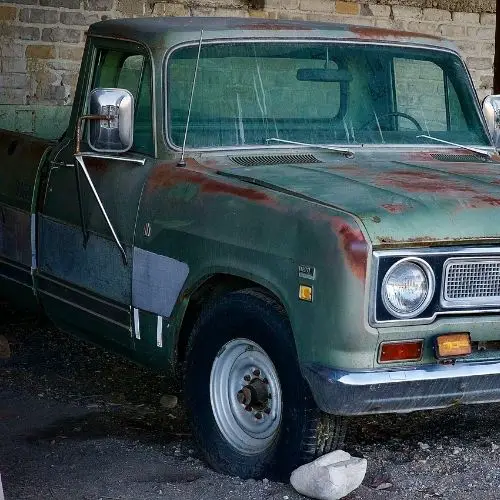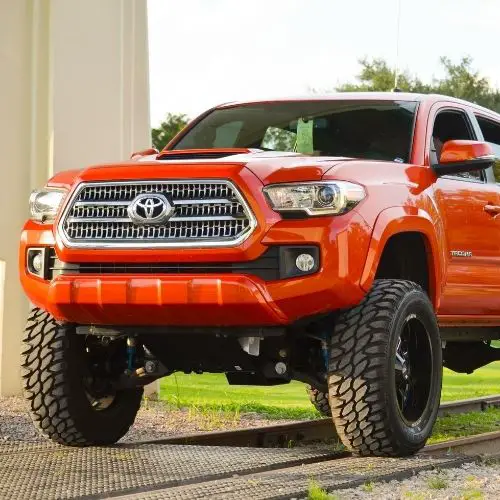We may get commissions for purchases made through links in this post. Thanks for the support! 👍
The appearance of the tire can be deceiving. You may have a sleek-looking tire with lots of life left in them. You may check your tires and inspect them as often as you can, but how old are your tires, really? Old tires are risky, and as the expression goes, it can be an accident waiting to happen.
Tires are reliable after their manufacture for about 6-years and can stretch it to 8 years provided you look after your tire and be aware of issues before it happens.
A 20-year-old tire may not be safe cause tires deteriorate through the years as they make it mostly of rubber that will degrade, eventually. There are reasons the tire will break down, such as heat, sunlight, snow, and other elements that can speed up its degradation.
Once the expiration date of the tire is reached, such as the sixth year from its manufacturing date, add a few years to that and the tire is considered old by a standard. Tires age and their flexibility is not as it used to but becomes brittle and hardens, which occurs naturally even if it is being used often or it is simply in the storage facility.
If you have a pickup, and are need of new tires, make sure to read through this article of our favorite truck tires after reading through the article.
How to know if your tire is too old?

Tires can age even if you are not using your vehicle and can get old by being driven most of the time. So how can you tell if your tire is old?
Check the DOT code
The DOT code is found on the outer portion of the tire and the last 4-digits pertain to the week and year your tire was manufactured. By knowing how to check the date of manufacture of your tire helps note its actual age, and from there, you decide whether you need to change your tire or hold on to it for a few years more.
Visible Wear and Tear
It includes cracks and bulges, splits, bumps, and blisters. You can see cracks in the tire’s sidewall, while bulges are visible due to air between the tire lining and exterior rubber. Blisters and bumps are also a sign that your tire is weak and may cause a sudden blowout, which you want to avoid at all costs. You don’t want to have an accident while driving, especially on the freeway, or get stranded in the middle of nowhere.
Frequent changing tire air pressure
If your air pressure changes from time to time, there is no need to worry, but if it keeps on changing frequently requiring constant tire inflation, then there is something wrong with it. It can have a puncture or due to wear and tear.
Tires can get porous, and this causes air to leak out instantly, often making changes in tire pressure.
Bald Tires
It is not surprising that a bald tire is a sign that your tire is definitely that – old. Do not wait till your tires are completely bald before you replace them. There is not enough tread depth to channel the water, and traction is not how it used to be, so you may lose control of your vehicle, particularly when the road is slippery due to heavy rains or snow.
Bald tires are exposed to punctures since there is no more rubber to protect them from the road. Braking is not as quick.
Excessive Vibration

When driving on the road, it is not uncommon to encounter some bumps, which may cause some vibration, but it is another problem when the vibration is extreme.
A skilled driver can feel when there is something off with the vehicle, and vibration may mean damaged tires as well. Though there are other reasons for excessive vibration, such as alignment or suspension issues, better to have it checked by a professional to make you feel at ease.
Maintenance
Ask yourself, do you always drive your car? Do you inflate it as needed and have it maintained through the years? How about tire rotations and correct air pressure? If your answer is negative, then you should know what to do next.
Do not compromise your safety and save money by not changing your tire when you should. It is the most significant part of your vehicle, and you should not prolong the replacement as required. Remember, your life and that of your passengers could depend on it.
- 2 Tires vs 4 Tires: Should you replace all 4 tires every time?
- Dealer over-inflate your tires? Here is why, and what you can do about it
- Alignment after Replacing Tires: Does it need to be done?
Frequently Asked Questions
Can I use 10 years old tires?
It is not recommended to use tires that are already 10 years old as it is generally excepted that you should be thinking about replacing your tires every 6-7 years, even if the tires are still in “good” condition. After this time period they begin to break down, even if you can’t visually see it.
Do tires have expiration dates?
It may come as a surprise, however tires actually do have expiration dates! Somewhere on the tire you own you can find the production date, and an expiration date. This will tell you when it is most definitely time to be replacing that tire.
What happens if you leave a tire flat for a long time?
This is a common thing for vehicles that sit for a long time! Leaving flat tires for long periods of time can cause the side walls to crack, exposing wires. It also will cause flat spots in the tread portion of the tire. This can cause the tire to “hop” down the road instead of going smoothly.
Conclusion
Basically tires can get old if they continue to be used without adding a rest period between the use at times. It is recommended to check and corroborate the DOT Code on the tire in order for you to know when it was manufactured.
You should also do visual inspection of the tires and check for cracks, bulges or blisters. You should have your tires rotated every so often to ensure that all tires are worn at an even rate. Also make sure that you have the correct air pressure in order to avoid high tire wear.


